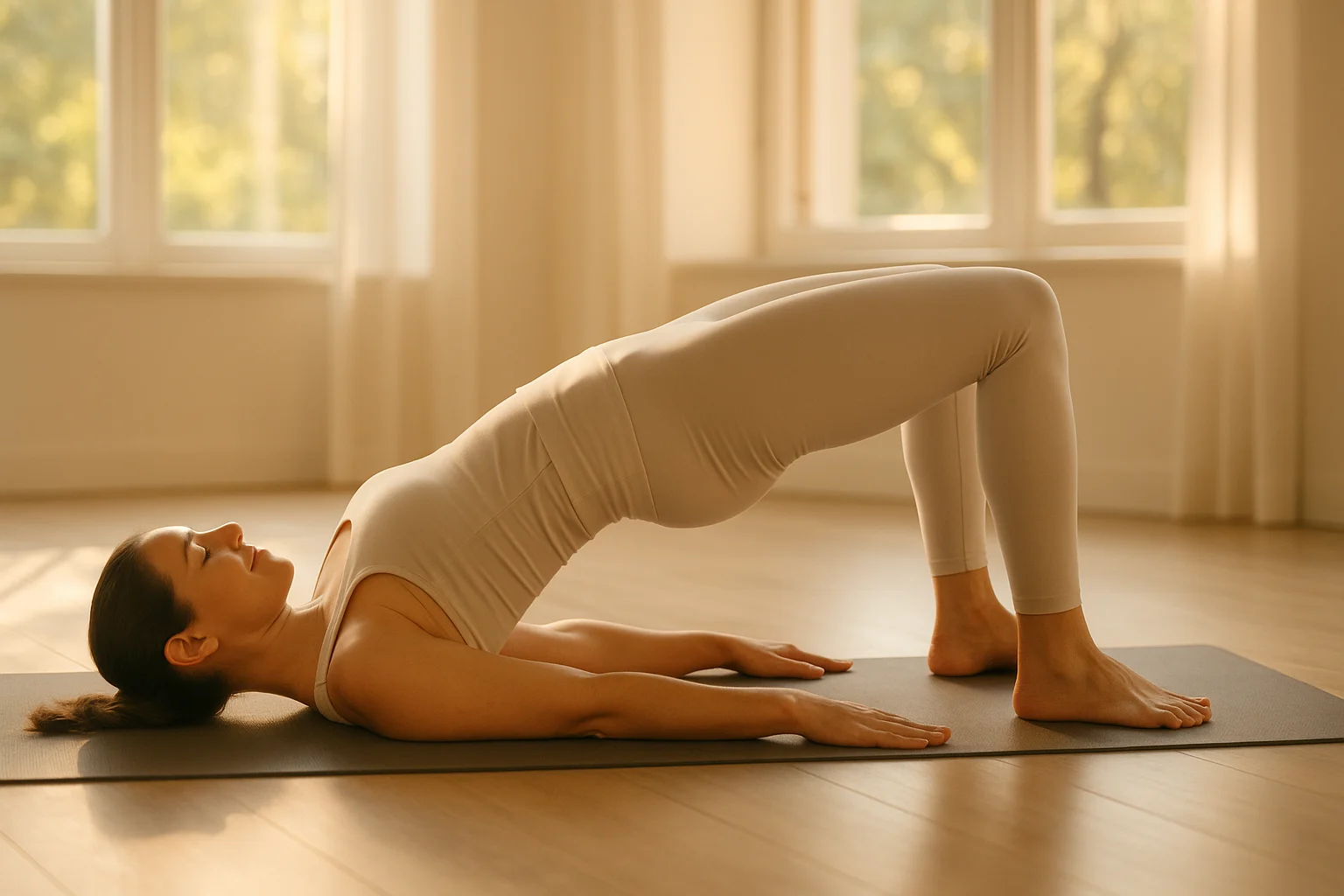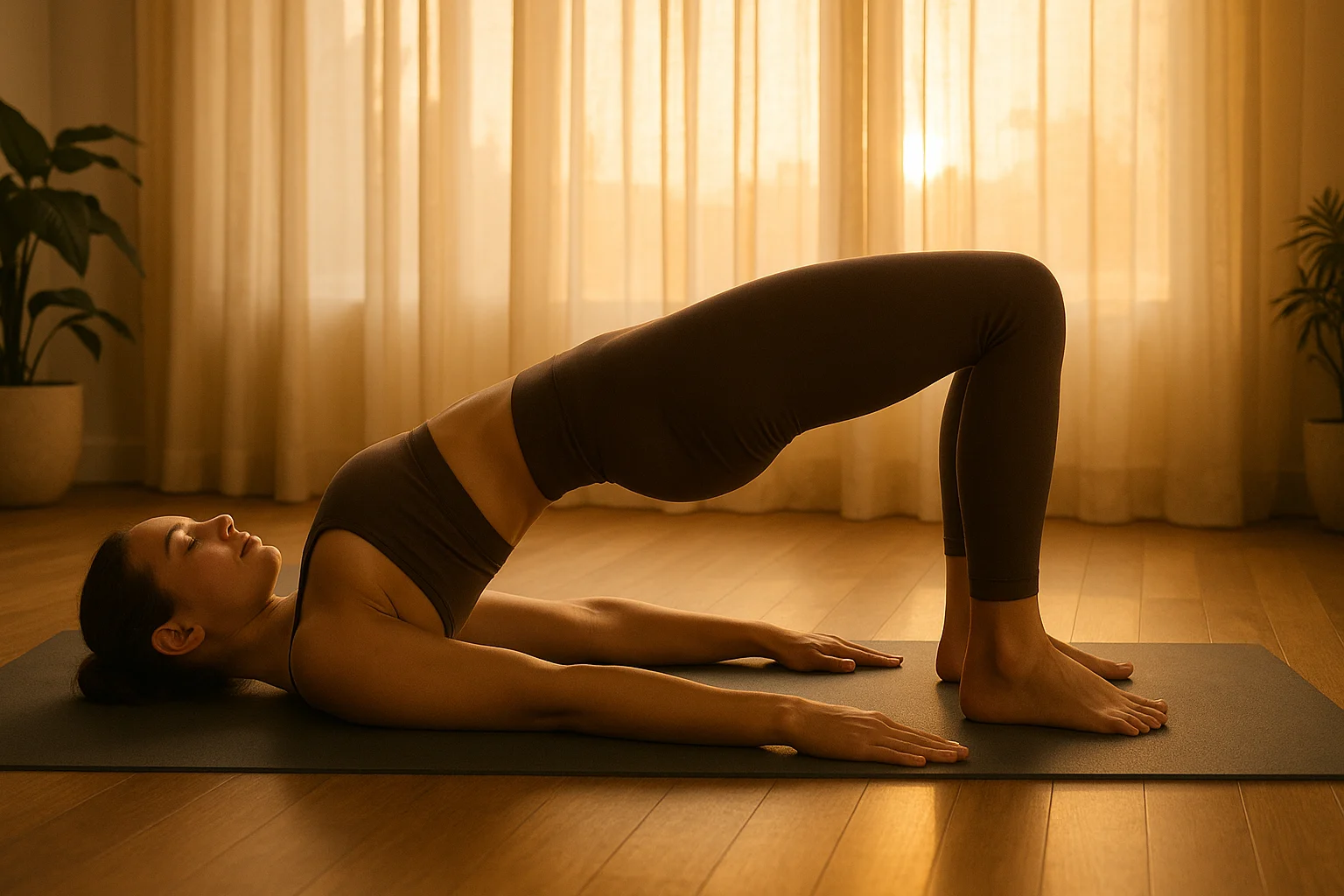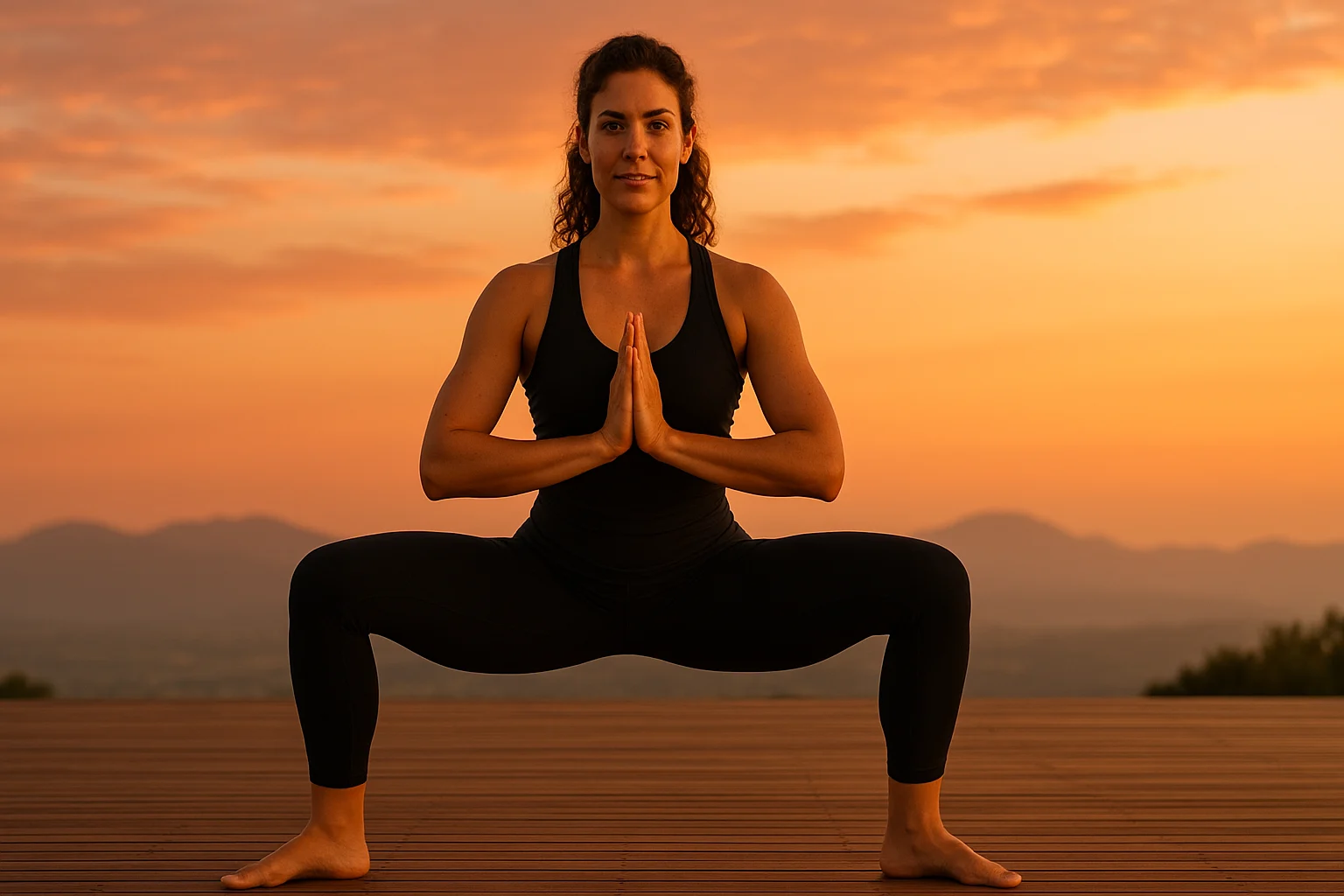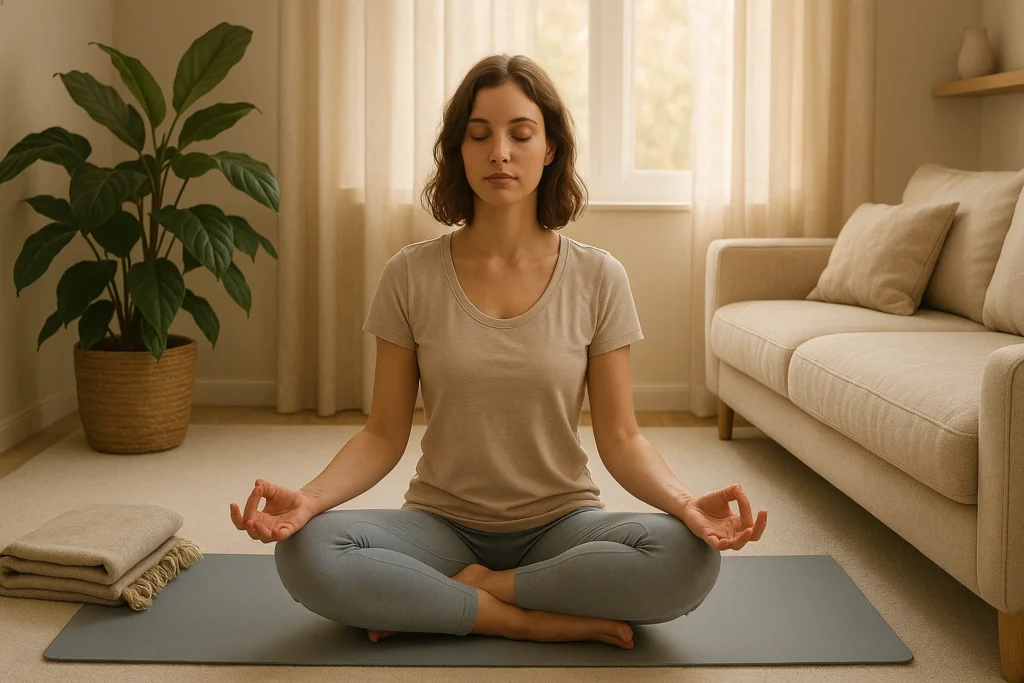
Looking to feel steadier, stronger, and more in control? Yoga poses for pelvic floor strength offer a gentle, effective way to reconnect with your core and daily confidence. Whether you’re postpartum, athletic, or just want better support, these poses pair breath with precise engagement—part of our broader approach to yoga for specialized health.
Find Your Perfect Pose!Table of Contents
- 5 Benefits of Pelvic Support Yoga
- What Is the Pelvic Floor?
- Why Yoga Supports Pelvic Health
- Mastering Engagement: The “Lift” Technique
- Top Poses for Strength
- Diaphragmatic Breathing for Core–Pelvis Synergy
- Pelvic Training for Everyone
- Pelvic–Core Connection
- Tips for a Safe, Effective Practice
- Frequently Asked Questions
- Conclusion
5 Benefits of Yoga Poses for Pelvic Floor Strength
- Pelvic Floor Powerhouse: These muscles support bladder control, core strength, and overall well-being.
- Gentle Strengthening: These pelvic health poses connect and balance these muscles effectively.
- Proper Engagement Matters: Learning to lift and release your pelvic floor is key to effective practice.
- Consistency Pays Off: Even short, regular sessions may improve pelvic floor health over time.
- Whole-Body Benefits: Yoga may enhance posture, may help reduce back discomfort, and can boost body awareness.
This post has affiliate links. We may earn a commission. Learn more.
What Is the Pelvic Floor? Your Body’s Hidden Foundation
Before exploring pelvic floor work, let’s get familiar with these muscles. Imagine your pelvic floor as a supportive hammock stretching from your tailbone to your pubic bone, and from one sit bone to the other. This “floor” cradles your bladder, bowel, and, for women, uterus.
These muscles work tirelessly:
- Support: They hold organs against gravity during walking or standing.
- Control: They manage bladder and bowel functions.
- Stability: They partner with your abs and diaphragm to stabilize your spine.
- Sexual Health: They enhance sensation and function.
According to the Cleveland Clinic, effective care blends strengthening with relaxation—exactly what yoga trains.
Common Pelvic Floor Challenges
Weakness can follow pregnancy, aging, or lots of sitting and may show up as leaks. On the flip side, tension—often from stress or hard training—can feel uncomfortable. This practice meets both needs: build what’s underactive and teach tight muscles to let go.

Why Yoga Transforms Pelvic Floor Health
Kegels target one area. Yoga adds what many people miss: movement, breath, and mindfulness. Together, they’re easier to use in real life. Here’s the quick case:
- Mind–body awareness: Learn what a true lift feels like—and when to let go.
- Balanced strength: Build control while keeping the ability to relax.
- Core stability: Work that supports deep abs and the back, which can ease aches.
- Better breathing: Diaphragmatic breath naturally pairs with pelvic floor movement.
- Stress relief: A calmer nervous system means less clenching down there.
“Yoga taught me to listen to my body—it’s a conversation with your core,” says a pelvic health physical therapist.
Emily, 45, runs most mornings. After a few weeks of focused practice, she noticed fewer mid-run leaks: “I’m running with confidence again.” Personal experiences vary.
Mastering Pelvic Floor Engagement: The “Lift” Technique
Before you dive into the poses, get the feel first. Skip the glute squeeze; you’re after a small “lift-and-hug” inside.
How to Find Your Pelvic Floor
- Stop Urine Cue: Imagine pausing urine mid-stream (don’t practice while peeing). Feel the lift?
- Hold Back Gas: Picture lifting the muscles around your anus inward.
- Blueberry Lift: Visualize gently lifting a blueberry inside your vagina toward your belly button.
Crucially, breathe smoothly while lifting. On inhales, your pelvic floor softens; on exhales, it lifts. This breath connection is essential for these poses.
“The secret isn’t squeezing—it’s a gentle elevator ride, moving with your breath,” shares a certified yoga teacher.
Top Yoga Poses for Pelvic Floor Strength
These five moves are pelvic-support poses that pair with your breath. Fewer, cleaner reps beat more reps—quality first.
Quick Routine: Pelvic Health Poses (10 minutes)
Do two easy rounds: Bridge (5–8 reps), Cat–Cow (5–10 rounds), and Child’s Pose (5–10 breaths). Keep the lift light on exhales.
1. Bridge Pose (Setu Bandhasana) 🌉
Bridge lights up your glutes and hamstrings and invites a gentle pelvic floor lift.
How to do it:
- Lie on your back with knees bent and feet hip-width; arms by your sides.
- Take a settling inhale.
- Exhale to press through your feet and lift your hips; add a light “blueberry lift.”
- Stay for 3–5 breaths—lift lightly on exhales, soften on inhales; keep knees tracking forward.
- Exhale to lower with control and fully release at the bottom.
- Repeat 5–8 times, stopping if your low back or neck tenses.
Roll-On Relief for Post-Practice Care
After strength work like Bridge, a targeted topical can be a kind companion. cbdMD’s Freeze is a roll-on you apply where you feel it—think everyday back or SI-area tightness around practice—so you can keep showing up without overdoing it.
Try the Freeze roll-on Partnered
No discount code needed — just click and explore.
Not medical advice; consult a healthcare professional for personal guidance.
2. Goddess Pose (Utkata Konasana) 🌸
This wide squat opens the hips and trains a steady pelvic floor—strong, not clenched.
How to do it:
- Step wide (about 3–4 feet), toes turned out around 45°.
- Inhale to lengthen through your spine.
- Exhale to bend your knees over your ankles; hands to thighs or heart.
- On each exhale, add a gentle pelvic floor lift; feel the inner thighs help.
- Hold 5–10 breaths—lift on exhales, let the ribs widen on inhales.
- Inhale to rise and release the effort.
- Repeat 3–5 times.

3. Deep Squats (Malasana Variation) 🌿
Deep squats build hip mobility and teach the pelvic floor to relax as well as engage.
How to do it:
- Stand a bit wider than hip-width with toes slightly turned out.
- Take a slow inhale.
- Exhale to lower into a squat; slide a blanket under your heels if they lift. Press elbows to knees.
- Let the pelvic floor soften; if it feels okay, add a tiny lift on each exhale.
- Hold 5–10 breaths, breathing low into the belly.
- Press through your feet to stand tall.
4. Cat-Cow Pose (Marjaryasana-Bitilasana) 🐾🐄
This flowing movement syncs breath and pelvic floor, boosting awareness and flexibility.
How to do it:
- Start in tabletop, wrists under shoulders, knees under hips.
- Inhale (Cow): Drop belly, lift chest and tailbone, soften through the base of the pelvis.
- Exhale (Cat): Round spine, tuck chin, gently lift from the pelvic base.
- Flow for 5–10 rounds, syncing breath and movement.
5. Child’s Pose (Balasana) 😴
This restful pose may help release pelvic floor tension, promoting relaxation after strengthening.
How to do it:
- Kneel, big toes touching, knees wide or together.
- Exhale, fold forward, resting torso on or between thighs.
- Extend arms or rest them by your sides.
- Breathe deeply, letting your pelvic floor relax fully.
- Hold as long as desired.
Diaphragmatic Breathing: The Core of Your Pelvic Floor Training
Your breath powers your pelvic floor. Inhales lower the diaphragm, stretching these muscles; exhales lift them to engage. Practicing breathing techniques daily may enhance yoga for pelvic floor health.
How to Practice Diaphragmatic Breathing
Lie down, hand on your belly. Inhale deeply, letting your belly rise without forcing your chest up. Exhale slowly, feeling your belly fall and pelvic floor lift slightly. Practice for 2–3 minutes daily to strengthen this connection and support yoga for pelvic strength.
Pelvic Floor Yoga for Everyone
People often think this is “women only,” but this practice helps everyone. Men may find that Bridge Pose supports pelvic stability and circulation. Older adults may use it to support balance. Athletes—like Mark, a cyclist—often report less back discomfort: “I feel stronger on and off the bike.”
Connecting Your Pelvic Floor to Core Stability
Think of your pelvic floor working with your diaphragm, deep abs, and multifidus—your “core canister.” Training them together may support:
- Better posture
- Less back discomfort
- Improved balance
- More efficient movement
That’s why this approach pays off beyond the pelvis.
Tips for a Safe, Effective Practice
Maximize your practice with these tips:
- Listen to your body: If a pose pinches, back off or tweak it.
- Start small: 10–15 minutes, 3–5 times a week works well.
- Quality first: Clean engagement beats more repetitions.
- Use props: Blocks and blankets are smart support, not “cheats.”
- Match your needs: If you have prolapse, consider going easy on deep squats and favoring Bridge; for significant leaks, you may prefer starting with Cat–Cow. Check with a clinician for individualized guidance.
- Get guidance: A specialist for menopause can tailor cues if that’s relevant for you.
- Hydrate: Drink enough to support tissues and focus.
- Let go: End with Child’s Pose to release the pelvic floor.
“After childbirth, yoga rebuilt my core strength,” says Sarah, a new mom. “I can laugh without worry now!”
Find Your Ideal Yoga Pose for Pelvic Floor Strength
Answer these questions to discover the best yoga pose for your pelvic floor goals.
Frequently Asked Questions
Conclusion: Build a Stronger, More Vibrant You
Stick with this pelvic floor-focused practice and you can build steady, usable strength. Let breath lead the work, keep the effort gentle, and posture and comfort often follow. Start with these pelvic floor yoga poses, listen in, and add time as you feel ready.


